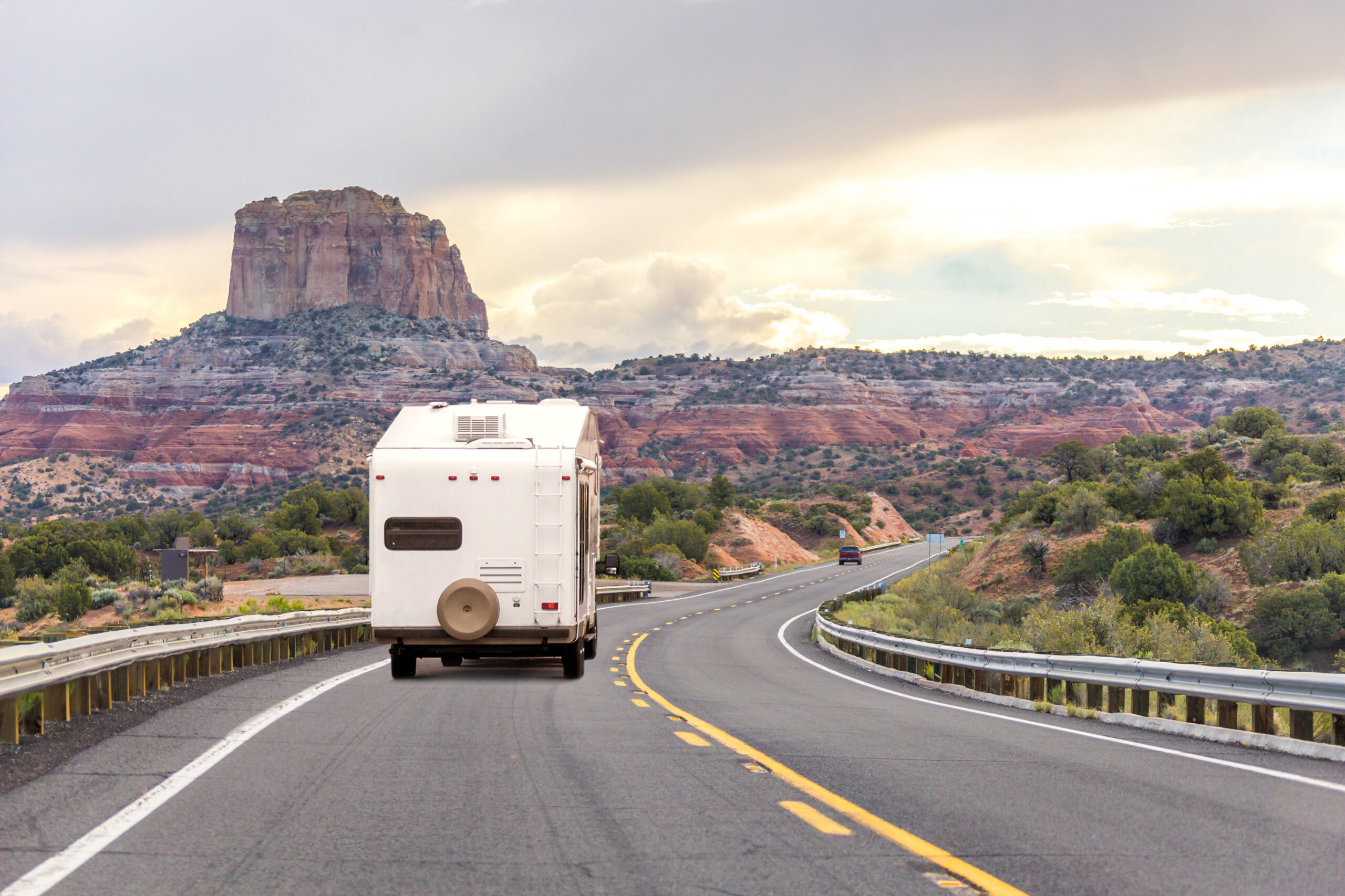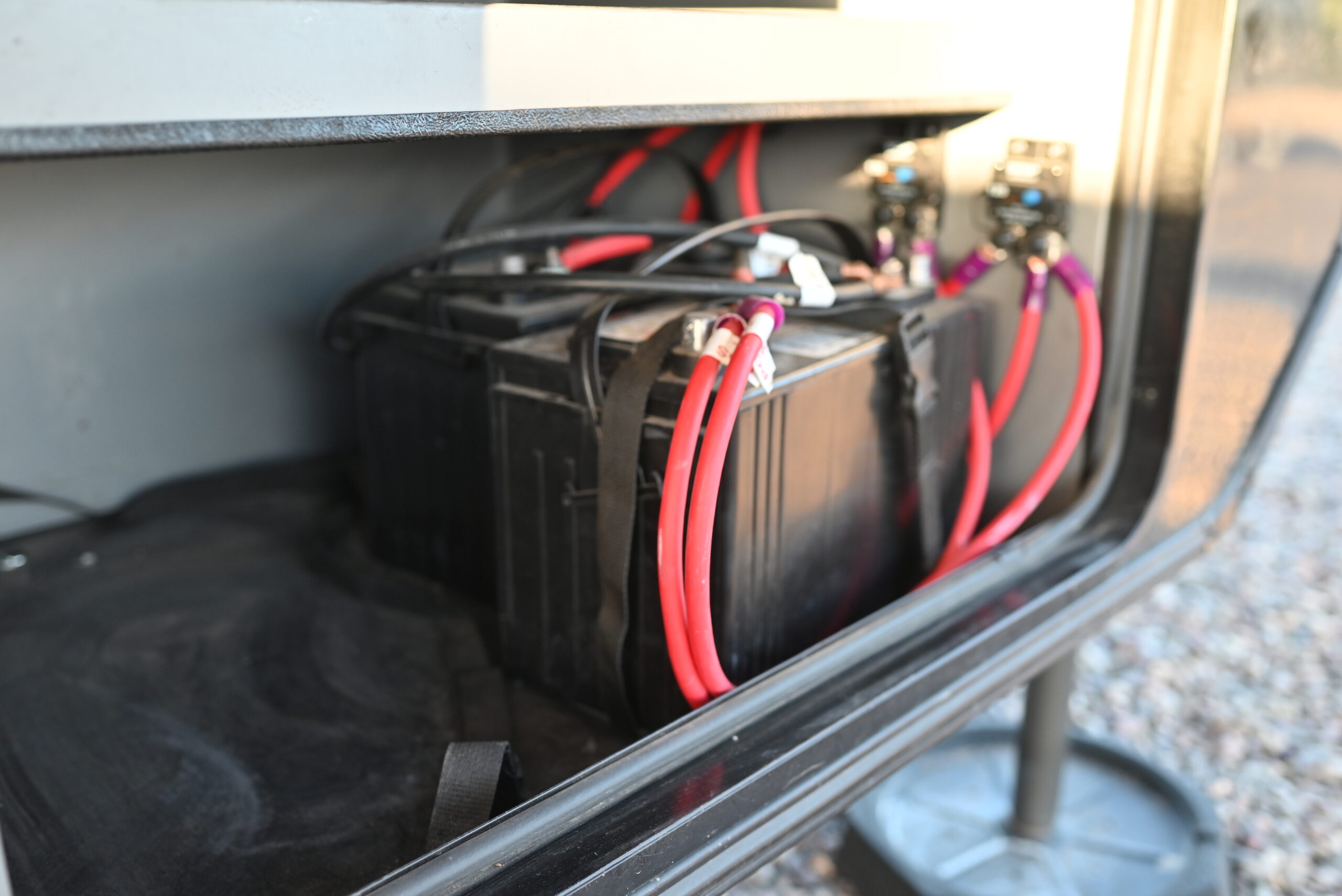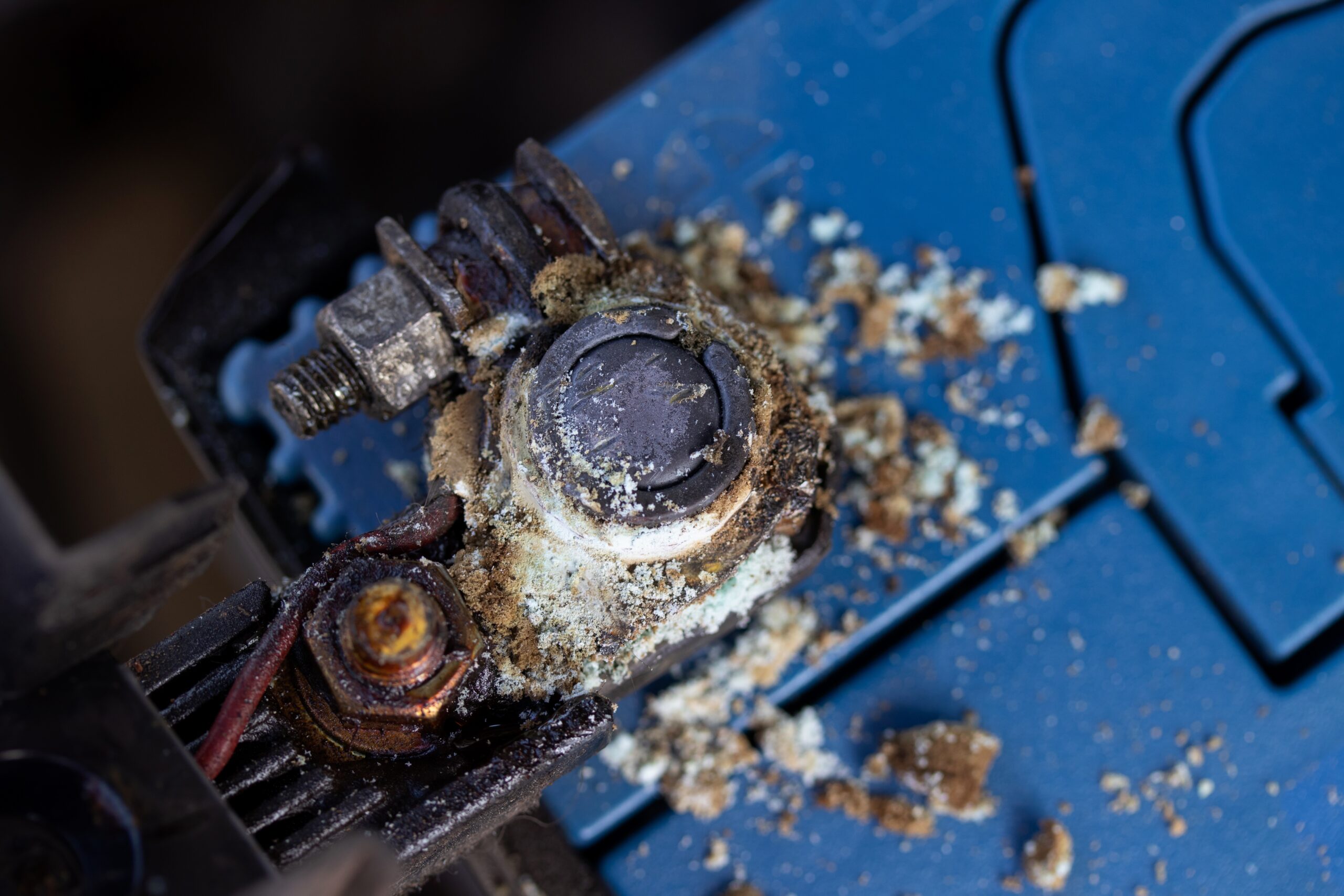
How To Charge An RV Battery While Driving
With more and more people dry camping, knowing how to charge an RV battery while driving is important, as arriving with a fully charged house battery is key for a successful campout.
For years, RVers have relied on a 12-volt charge line to keep their RV house battery(s) charged while driving. The charge line basically connects the electrical charge coming from the vehicle’s alternator (tow vehicle or motorhome) to the house battery(s). While it was not the optimum way to charge an RV battery while driving, it sufficed.
Within the past few years, vehicle manufacturers have begun installing “smart alternators” (aka variable voltage alternators) on vehicles to maximize fuel mileage. The problem with smart alternators is they don’t produce sufficient amounts of power while driving down the road, leaving little (if any) power left to charge the house battery(s). Check out the video below to determine if you have a smart alternator in your vehicle.
What are the alternatives on how to charge an RV battery while driving?
Here are just a few ideas:
DC to DC charger
There are a variety of DC to DC chargers on the market today that can be used with smart alternators or older “dumb alternators” to greatly increase charging efficiency when operating the engine on your tow vehicle or motorhome.
A DC to DC charger is installed inline between the vehicle’s alternator and house battery(s). It then regulates the proper amount of DC power from your vehicle to charge your house battery(s). This is probably the simplest solution on how to charge an RV battery while driving.
Learn more about DC to DC chargers here:
On-board generator
Motorhome owners with a less than robust 12-volt RV battery charging system can always fire up the on-board generator while driving and use it to charge their house battery(s) via the 120 volt converter/charger.
Hybrid trucks
There are many hybrid trucks entering the market today with sizeable generators built in allowing the owner to power any number of 120 volt items including towable RVs. Many have discovered these trucks are useful to power their RV when dry camping. I suspect many have also found they can power their RV while driving and in turn charge their house battery(s) via the on board converter/charger in the RV. Once they arrive at the campsite, they have fully charged house batteries.
Auxiliary alternator
Some RVers install a second high output “dumb” alternator to solve the how to charge an RV battery while driving problem. The biggest obstacle with this solution is installing heavy enough wire and connectors to carry the load from the alternator to the house batteries without a significant drop in voltage.
The farther the distance between the alternator and house batteries, the more problematic this setup becomes. It is a decent solution for motorhome owners where the house batteries are near the alternator, but much more difficult for towable owners where the house batteries are far from the alternator. Here is a 300 amp auxiliary alternator kit to give you an idea as to what is on the market.
Car generator or large inverter
Fact – Electricity transmitted at high voltages is more efficient. This is why the transmission towers you see crisscrossing the country support power lines carrying up to 500,000 volts. Example relating to RVs: A 10 gauge wire can carry 30 amps of electricity at any voltage. Therefore, a 10 gauge wire can carry 360 watts (10 amps X 12 volts) of 12 volt automotive power or 3,600 watts (10 amps X 120 volts) of 120 volt household electricity. The latter is ten times more energy through the same size wire!
Many RVers are taking advantage of this fact by installing a larger inverter or inverter based product like a Car Generator hard wired under the hood of their vehicle. By stepping up the voltage to 120 volts at its source (alternator or start battery) of their vehicle, they can then transmit the higher voltage efficiently back to the converter/charger of their towable RV through a medium gauge wire to quickly charge the house batteries while driving. This method works extremely well when coupled with a high output auxiliary alternator as outlined above.
Note: I have asked several RV experts if they know of any electrical code violations concerning transmitting 120 volts from the tow vehicle to a towable RV when driving. No one has come up with any, but I encourage everyone to conduct their own research or hire a licensed electrician if they pursue this route.
Hopefully this short overview provides you with some insight on how to charge an RV battery while driving.
One of the best parts about RVing is engaging with the community of traveling enthusiasts. iRV2 forums allow folks to chat with other RVers online, and get other perspectives on everything RVing, including products, destinations, RV mods, and much more.
Related articles:



